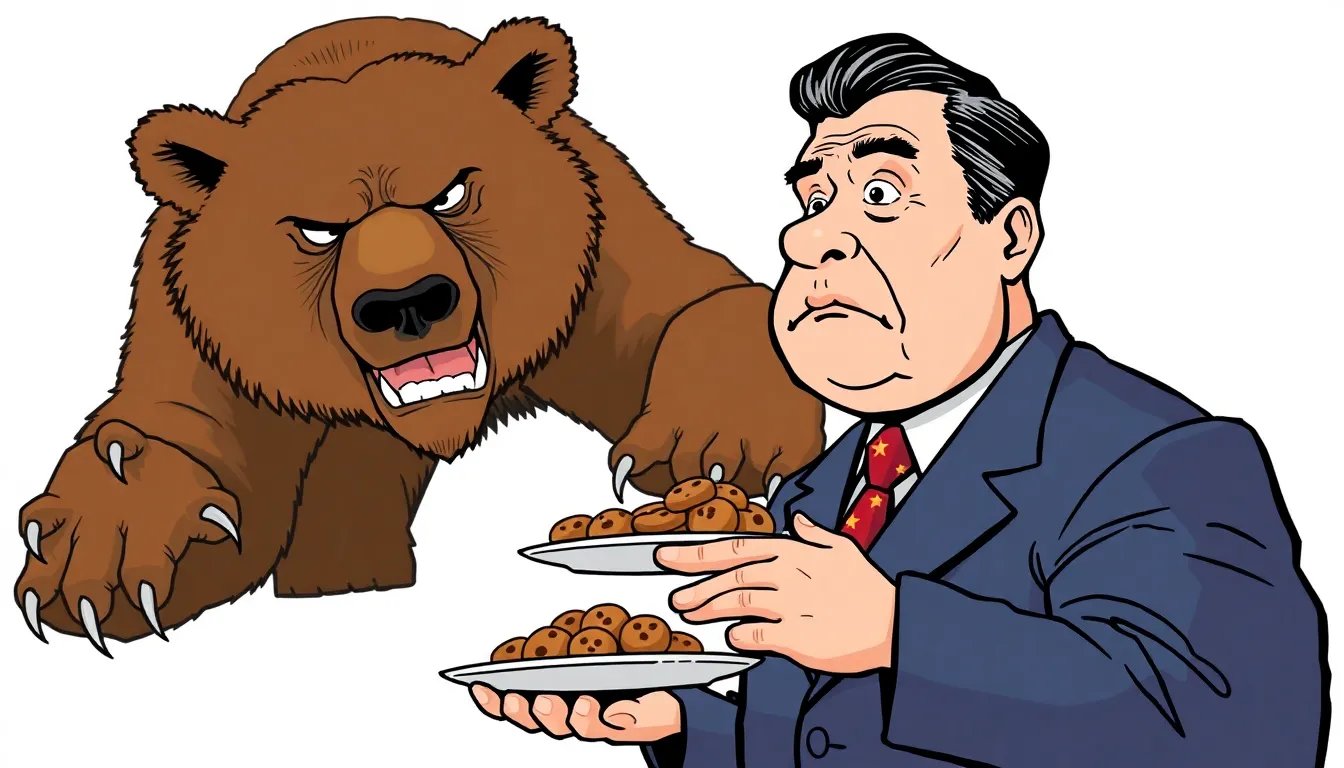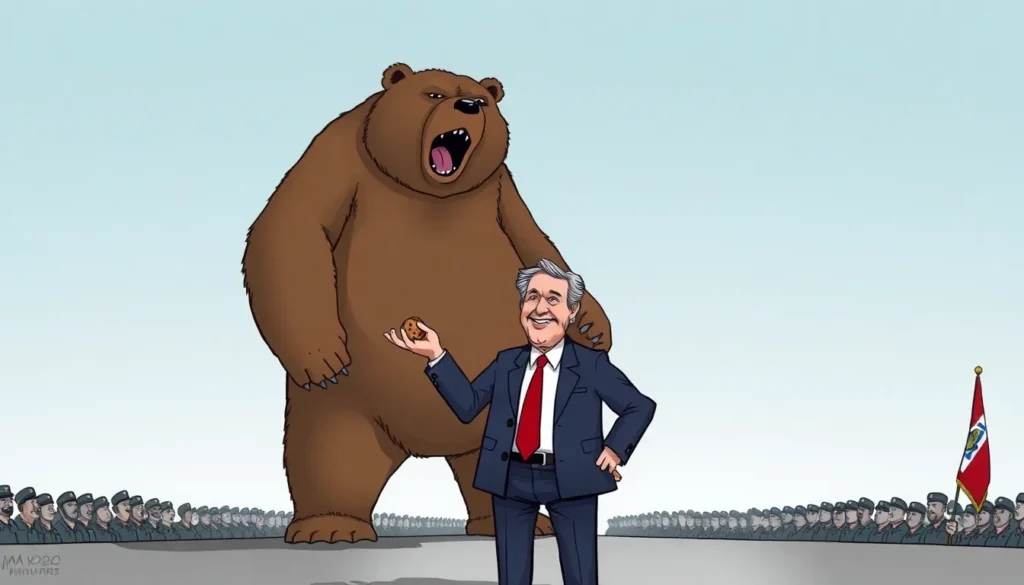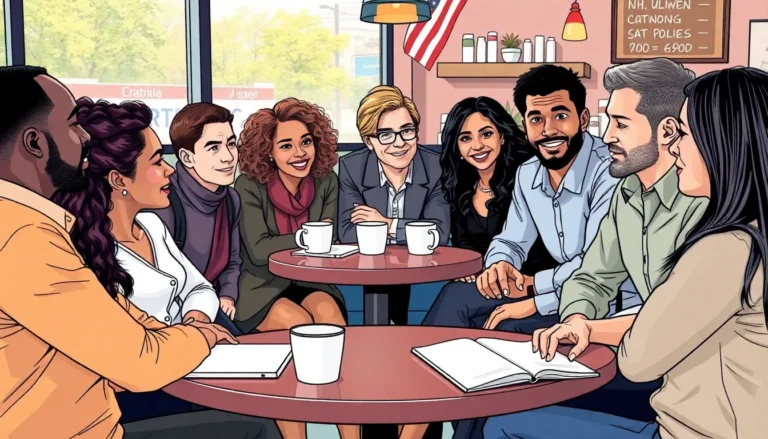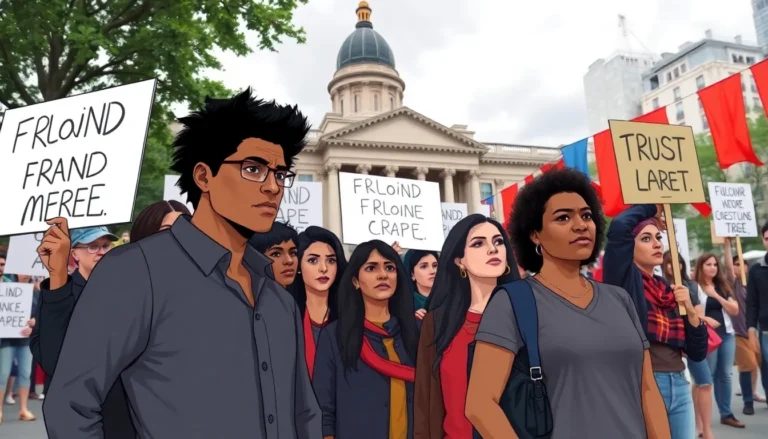Political cartoons have a unique ability to capture the essence of complex issues with a single image, and the theme of appeasement is a classic example. Imagine a cartoon where a well-meaning leader offers a cookie to a growling bear, hoping to avoid a bite. It’s funny yet thought-provoking, showcasing the delicate dance of diplomacy and the risks of giving in to aggression.
In this article, he’ll explore the world of appeasement through the lens of political cartoons, revealing how humor can illuminate serious historical lessons. From the absurdity of misguided compromises to the consequences of turning a blind eye, these cartoons pack a punch while making audiences chuckle. So buckle up for a witty ride through the art of political commentary, where laughter meets insight and history unfolds in unexpected ways.
Table of Contents
ToggleUnderstanding Appeasement
Political cartoons significantly illustrate the concept of appeasement, combining humor and serious historical commentary. These visual narratives often reflect the delicate balance between diplomacy and aggression, emphasizing the potential pitfalls that arise from yielding to threats.
Historical Context
Appeasement emerged prominently in the 1930s, primarily as a response to rising totalitarian regimes. Various nations, particularly Britain and France, sought to avoid conflict by making concessions to Hitler’s Germany. The Munich Agreement of 1938 exemplified this strategy, allowing Nazi Germany to annex parts of Czechoslovakia. Leaders believed that such compromises would maintain peace, yet these tactics ultimately encouraged further aggression. Political cartoons from this era captured the futile nature of appeasement, depicting leaders engaging with aggressors while neglecting the impending danger.
Key Figures in Appeasement
Key figures in the appeasement movement included British Prime Minister Neville Chamberlain and French Prime Minister Édouard Daladier. Chamberlain famously stated, “peace for our time” after the Munich Agreement, signaling hope for stability. Daladier shared similar views, advocating for diplomatic solutions over military confrontation. Artists often depicted them as naive, showcasing the folly of their decisions through humorous yet critical lenses. This portrayal highlights their underestimation of authoritarian ambitions and the long-term consequences of prioritizing short-term peace over strategic resistance.
Analyzing the Appeasement Political Cartoon

Political cartoons serve as powerful tools for illustrating complex themes, including appeasement. Through visual storytelling, these cartoons convey significant historical messages.
Visual Elements and Symbols
Cartoons often feature striking visual elements that underscore their themes. A common symbol is the bear, which typically represents aggression and threat. Leaders offering cookies signify vulnerability and misguided diplomacy. The cookie serves as a metaphor for concessions, illustrating the folly of appeasing aggressors. In many cases, the expressions and postures of the characters amplify the absurdity of their actions. For instance, exaggerated features or dramatic gestures highlight naivety. Such visual cues engage viewers and provoke thought about the dangers inherent in appeasement strategies.
Messages Conveyed
The messages in these political cartoons often critique the decisions made by leaders during times of tension. They highlight how appeasement can lead to greater conflict rather than peace. Humor plays a crucial role in conveying serious warnings about the consequences of yielding to threats. By depicting leaders as foolish or naive, these cartoons challenge viewers to reconsider their perspectives on diplomacy. Additionally, messages often connect past events, such as the Munich Agreement, to ongoing political struggles, showing that the lessons learned remain relevant. The critical tone invites reflection on the importance of resilience against aggression.
Impact of Appeasement Political Cartoons
Political cartoons significantly shape perceptions about appeasement and war. Their engaging visuals and humor resonate with audiences, making complex themes more accessible.
Role in Public Opinion
Political cartoons serve as catalysts for shaping public opinion on appeasement. Leaders like Neville Chamberlain and Édouard Daladier often appear depicted as naive figures, illustrating the absurdity of yielding to threats. These images reinforce skepticism toward diplomatic strategies perceived as weak. As viewers analyze these representations, they often develop critical perspectives on leadership decisions. Engaging visuals provoke discussions, allowing citizens to form deeper opinions about historical events. The humor embedded within the caricatures facilitates memorability, ensuring the messages linger in public consciousness.
Influence on Political Discourse
Political cartoons influence political discourse by prompting debate about the merits of appeasement tactics. Visual satire becomes a tool for critique, challenging the legitimacy of diplomatic compromises. Cartoonists highlight the risks tied to yielding under pressure, encouraging lawmakers and citizens to scrutinize contemporary policies. The humorous yet pointed portrayals inspire critical conversations about authority and aggression. Difficulties in negotiating with aggressors become more apparent through these artistic expressions. In debates, the messages presented in cartoons can bridge discussions about past and present political strategies, fostering a more informed dialogue within society.
Political cartoons about appeasement serve as a compelling reminder of the dangers of yielding to aggression. Through humor and sharp visuals they challenge perceptions of diplomacy and reveal the absurdity of misguided compromises. These artistic expressions not only critique historical decisions but also resonate with contemporary political discourse.
By engaging audiences with memorable imagery they foster critical discussions about the implications of appeasement strategies. The lessons drawn from these cartoons remain relevant today as leaders navigate complex global challenges. Ultimately they encourage a more cautious approach to diplomacy reminding society that yielding to threats can often lead to greater conflict.




